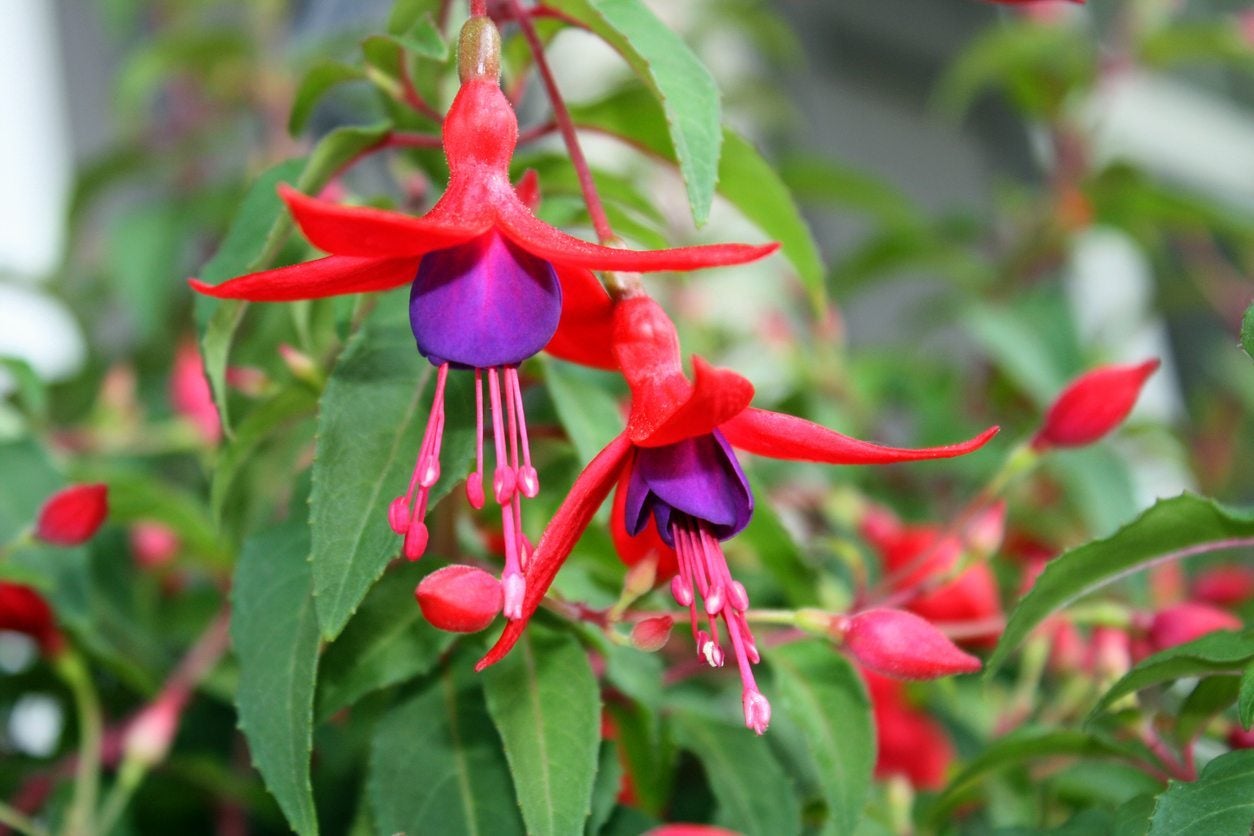Deadheading Fuchsia Plants – Do Fuchsias Need To Be Deadheaded


Deadheading can be an important step in caring for flowering plants. Removing spent flowers makes the plants more attractive, it’s true, but more importantly it encourages the growth of new flowers. When flowers fade, they give way to seeds, which most gardeners don’t care about. By getting rid of the spent flowers before the seeds start to form, you keep the plant from expending all that energy-- energy that can be better spent making more flowers. Deadheading isn’t always necessary, however, and the method can vary from plant to plant. Keep reading to learn more about how to deadhead a fuchsia plant.
Do Fuchsias Need to Be Deadheaded?
Fuchsias will drop their spent flowers naturally, so if you’re only interested in keeping things neat, deadheading fuchsia plants isn’t really necessary. However, when the flowers drop, they leave behind seed pods, which take energy to form and discourage the growth of new flowers. This means that if you want your fuchsia to continue blooming throughout the summer, it’s a good idea to remove not just the faded flowers but also the swollen seed pods underneath them.
How and When to Deadhead Fuchsias
When your fuchsia plant is blooming, check it weekly or so for spent flowers. When a flower is starting to wilt or fade, it can be removed. You can use a pair of scissors or simply pinch off the flowers with your fingers. Make sure to remove the seed pod with it-- this should be a swollen ball that’s green to deep blue. If you want to encourage bushier, more compact growth as well as new flowers, pinch off a little bit higher on the stem, including the lowest set of leaves. The remaining stem ought to branch out from there. Just make sure you don’t accidentally pinch off any flower buds in the process. That’s all there is to removing spent blooms on fuchsia plants.
Sign up for the Gardening Know How newsletter today and receive a free copy of our e-book "How to Grow Delicious Tomatoes".

The only child of a horticulturist and an English teacher, Liz Baessler was destined to become a gardening editor. She has been with Gardening Know how since 2015, and a Senior Editor since 2020. She holds a BA in English from Brandeis University and an MA in English from the University of Geneva, Switzerland. After years of gardening in containers and community garden plots, she finally has a backyard of her own, which she is systematically filling with vegetables and flowers.